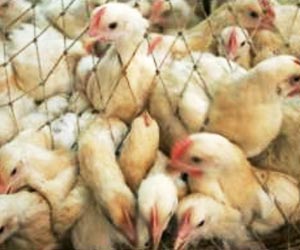A virulent new strain of influenza appears to retain its ability to cause serious disease in humans even after it develops resistance to antiviral medications, finds researchers.

Initial reports suggested that H7N9, an avian strain of influenza A that emerged in China last spring, could rapidly develop a mutation that made it resistant to treatment with the antiviral medication Tamiflu (oseltamivir). However, patients in whom drug resistance developed often had prolonged, severe infections and poor clinical outcomes. No vaccine is currently available to prevent H7N9, which infected at least 135 people and caused 44 deaths during the outbreak. In the absence of a vaccine, antiviral drugs are the only means of defense for patients who are infected with new strains of the flu.
"In this outbreak, we saw some differences in the behavior of H7N9 and other avian influenza strains that can infect humans, beginning with the rapid development of antiviral resistance in some people who were treated with oseltamivir and the persistence of high viral loads in those patients," said lead investigator Nicole Bouvier, MD, Assistant Professor of Medicine, Infectious Diseases at the Icahn School of Medicine at Mount Sinai.
Specifically, the investigators found that a drug-resistant H7N9 virus retained its ability to replicate in human respiratory cells and was comparable to a non-resistant form of the virus in producing severe illness in animal models. And although H7N9 appears to have a limited ability to spread readily from human to human, transmissibility in animal models was comparable between drug-susceptible and drug-resistant strains. "Transmission was inefficient for both of the H7N9 viruses that we tested in our experiments," said Dr. Bouvier. "But surprisingly, transmission of the drug-resistant virus was no less efficient than that of the drug-sensitive version."
"Many of the people infected with H7N9 during the outbreak in China were elderly or had other conditions that predisposed them to severe influenza illness," observed Dr. Bouvier. "Nevertheless, our study suggests that flu viruses can indeed develop drug-resistant mutations without suffering a penalty in terms of their own fitness."
Older antiviral drugs such as amantadine are no longer effective in treating most strains of the flu that infect humans. Newer antiviral drugs called neuraminidase inhibitors block an enzyme that helps the virus replicate. These drugs include Tamiflu, a pill, and Relenza (zanamivir), a powder that is inhaled. Both medications have drawbacks: flu viruses can develop resistance to the medications in people who take them, and, in many parts of the world, neither drug is available in an intravenous form to treat those with severe infections.
Advertisement
Source-Eurekalert











